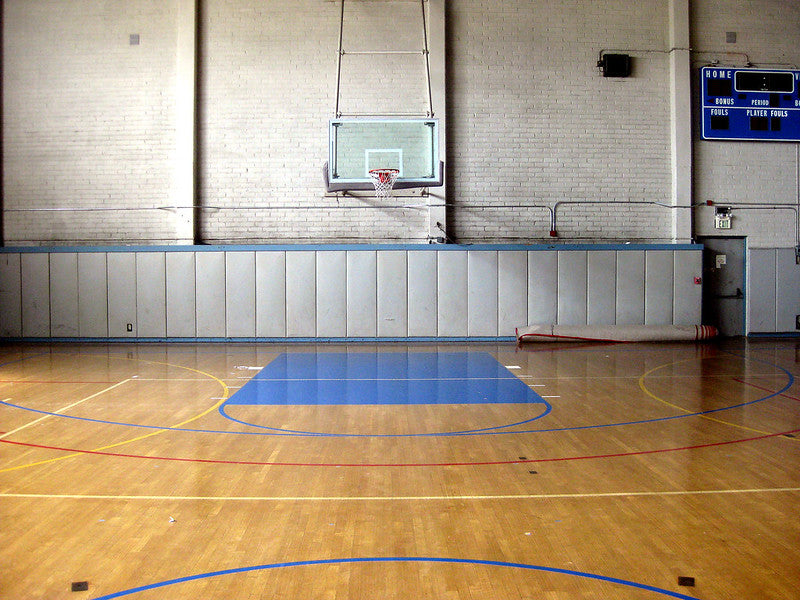Basketball courts come in all shapes and sizes, as various leagues across the world have their signature stadiums, complexes, and outdoor courts in the park. Wherever there is a desire to play, there will be a court of some size to play on. Here is a look at the dimensions of 2 popular leagues of basketball, the competitive high school leagues and the prestigious National Basketball Association.
Difference Between NBA and High School Court Size
After a quick initial glance at both an NBA and high school court, it may appear they are the same. However, while they are similar in many aspects, there are some differences that affect how the game is played. While watching the games on TV, basketball fans could potentially mistake the courts as the same, as the differences between NBA and high school courts are very subtle. The most important difference is the court size, as the courts in high school are smaller than NBA courts. This makes sense as high school players are smaller and less experienced than NBA players, so their courts must have shorter 3 point lines and overall dimensions. You can look at it from the other perspective as well, as NBA players would get crowded up on a high school sized court, and constantly drain 3 point shots as the 3 point line is considerably further from the hoop in the pros. Due to perspective, a NBA and high school basketball court could look the same on TV, but in reality, there are many differences.
How Long is a Basketball Court
As discussed above, different levels of play have different court dimensions, and all leagues will be covered. The smallest court is played in junior high school/middle school leagues, measuring at 74x52 feet. As one can imagine, it is the smallest court size as the players are the smallest and youngest and need time to develop and grow accustomed to the highschool and college sized court. The next smallest court size are the high school courts, and their dimensions are 84x50 feet. This is a drastic change from junior high, as this court size more closely resembles the NBA dimensions. Both men and women in the NCAA share the same court dimensions, as their field of play measures 94x50. International court dimensions are interesting, as they are different from NBA and college, but only the slightest bit. An international court comes in at 91’10”x 49’2.5”, making it just a few feet smaller than NCAA’s dimensions. It’s fascinating to think about if players notice the subtle changes in the court size when coming to an international league from college basketball. Lastly, in both the NBA and WNBA, courts measure 94x50 feet, the same dimensions used by all colleges. As you can see, courts in all leagues have similar lengths and widths, and it makes you wonder if players are able to tell the difference when making their way up to the NBA and other professional leagues.
How Many Feet is a Free Throw Line and Three Point Line?
Just like the size of the court, the length of the free throw line and three point line from the hoop varies depending on which league you are watching or playing in. In junior high and high school leagues, the length of the 3 point line is 19.75 feet all the way around. Because of the shorter distance, some of the best high school teams in the nation create the most exciting games to watch because they have the ability to knock down constant 3 pointers, resulting in exciting back and forth action. College basketball’s 3 point line is just a foot longer at 20.75 feet. Because junior high, high school, and NCAA have shorter 3 point lines, it allows the distance to be the same around the entire perimeter of the 3 point line. In the NBA, WNBA, and international leagues, the distance in the corners are shorter than the rest of the arc. In international play and the WNBA, the length from the corners is 21.65 feet while it is 22.15 feet at the longest point. In the NBA, the distance is 22 feet from the corners and 23.75 feet at the longest.


